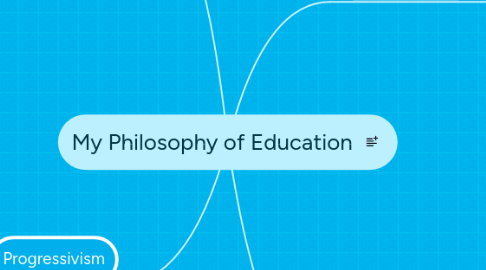My Philosophy of Education
by Shannon O'Malley


1. Check out http://www.mindmeister.com/tools
2. Progressivism
2.1. "Progressivism views nature as being in flux, as ever changing." (Ryan et al 2013) Progressivism begins with the student and believes that is its the teacher's job to help facilitate students to be free thinkers and to think for themselves in an ever changing world.
2.2. Relatively young philosophy of education. Came to be in the 1920's when progressivism was also a movement of politics and social.
2.3. Drew on the ideas of Rousseau and mainly John Dewey, the most influential educational philosopher.
2.4. Most like the romanticism philosophy, people are most naturally exploring and inquiring. This is most certainly true for science due to the ever questioning nature of scientists.
3. Teaching Biology
3.1. Biology
3.2. Life Science
3.3. 7th-8th grade
3.4. During my observations I have found that I mostly enjoy the middle school grade levels. These students are still excited about school and learning and it is a wonderful age. They are smart enough and old enough to understand the subject matter more in depth, but have not gained the attitudes that some high school students can present.
3.5. One goal is to facilitate these students in learning the subject that I love. The middle school grades are still excited about school and this can give me the opportunity as an educator to foster an understanding of the importance of the sciences in their young minds.
4. How to teach Biology
4.1. Assessments are a great tool to use in middle school classrooms. They help to determine prior knowledge, help facilitate learning and understanding, and give students the opportunity to interact with each other in the classroom.
4.2. My favorite assessment is pre-lesson quizzing. Before students are assigned reading or before a new lesson is started, students are given a worksheet to assess prior knowledge.
4.2.1. The instructor I observed made the kids fill out a pre-lesson quiz about Light. Then he made them draw what they thought an eyeball looked like and label as much as they could. They were going to be starting a lesson on light and structures of the eye and going to be dissecting a cow eyeball. This was a great and fun way to see how much they knew about the subject and it took less than 4 minutes.
4.2.2. True and false questions
